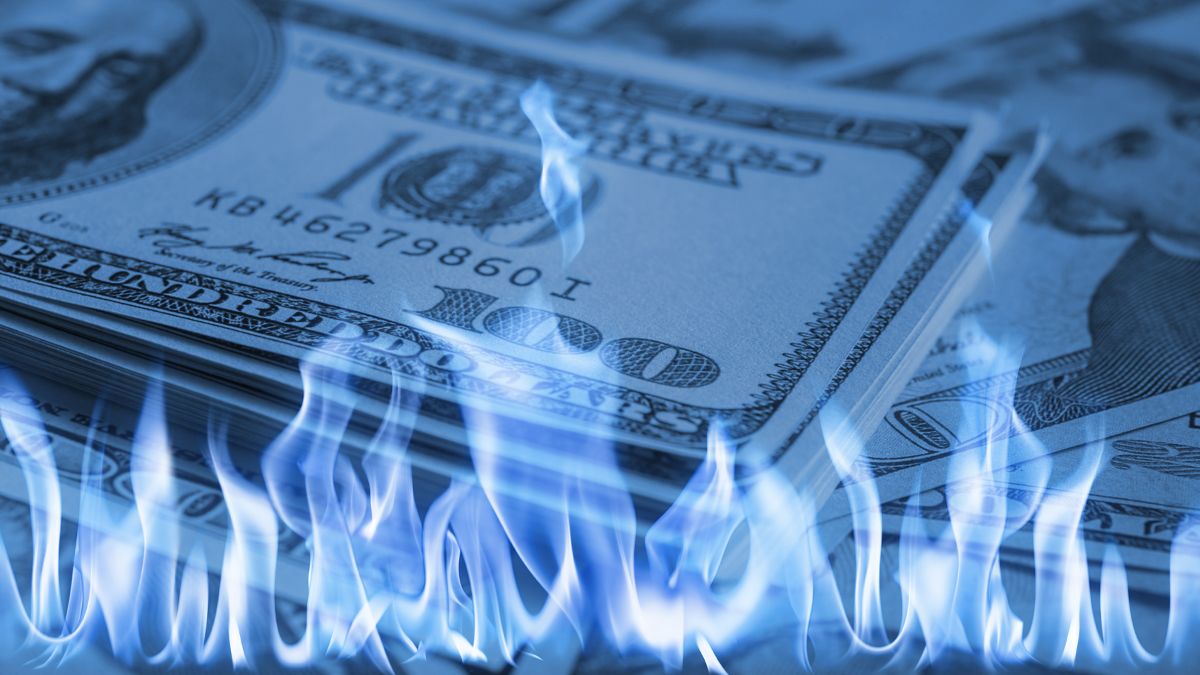For Gustavo Quintanafrom PR Exchange Operators, what is seen in the blue at these hours is not uncommongiven that “It is a small market, which reacts quickly to trend changes” and usually has sudden movements.
Thus, for the economist of Grupo Broda, Elena Alonso, it is normal that it has collapsed in recent days due to the announcement of the debt swap, which, as she explains, “compresses the maturities in pesos and it leads to speculation that there will not be so much pressure on the inflation and the exchange rate”. And, on the other hand, given that “the blue tends to follow the MEP”and taking into account that the financial dollars touched new nominal record values this Wednesday and that trend is maintained, with a Cash With Settlement (CCL) at $378.78 and a MEP, at $371, This last shot from the illegal is logical.
“The largest investors choose the CCLwhile the boys go to the blue, but, when there is a difference in favor of the stock market, the big players demand blue also and, since the market is small, the price rises as a reflection of not so great demands and these sudden jumps upwards are seen”, explained the economist Federico Glustein about this dynamic.
Blue dollar: the previous low was a buying opportunity
This is how he explains that there is a question of buying opportunity that works as follows: the blue had been falling and had been at $371 on March 7, a price level not seen since mid-Januarywhen it traded at $370, so the market saw it as a good deal, especially taking into account the bullish expectation that always reigns for alternative dollar markets in election years.
In fact, a source from the market confesses that he “is struck by the calm of the blue dollar of the last time, especially considering that it is an election year.” But the economist Christian Buteler indicates that this responds to several variables, ranging from the more attractive rates to be placed in pesos (which removes demand from the blue), up to a lower emission by the BCRA because there were no transitory advances, no soybean dollar programs and no bond purchases.
Furthermore, he adds that “economic activity is slack and there is a lack of money on the street, which is why we have gone from a season of high seasonal demand for dollars, such as January and February due to tourism, to one in which it usually falls”. And he assures that, beyond the rise this Wednesday, for these reasons we are seeing a weaker dollar in March than in previous months.
March: a month of low demand for dollars
It happens that, as Quintana points out, “March, traditionally, is a month where there is more demand for pesos“For the return of the holidays, in which you have to pay expenses, there is the start of classes and more expensive school fees.
Thus, despite the jump this Wednesday, which drew a perfect V movement (go short) in the course of the price of Dolar blueanalysts do not expect the price to skyrocket in the coming days in a context in which, as summarized by Joel Lupieri, from Epyca Consultores, “local and international tourism is beginning to run out, which calms the demand for foreign currency a bit and, at the same time, there is greater confidence in the instruments in pesos due to the exchange announced by the Government and the rate levels”.
They consider that these variables generate a some calm in expectation of devaluation and that, in this scenario, it is unlikely that the blue will take off much more than the current price. Therefore, Glustein expects that “in the next few days, the blue should slow down.”
He explains that this could be tempered with some sudden daily increases, but not permanent because he assesses that “there is no liquidity so that they are sustained over time”, although he acknowledges that the final result of this perspective will depend on some macro data at a general level, such as the sale of reserves, inflation and parities, in short.
Source: Ambito
I am a 24-year-old writer and journalist who has been working in the news industry for the past two years. I write primarily about market news, so if you’re looking for insights into what’s going on in the stock market or economic indicators, you’ve come to the right place. I also dabble in writing articles on lifestyle trends and pop culture news.




